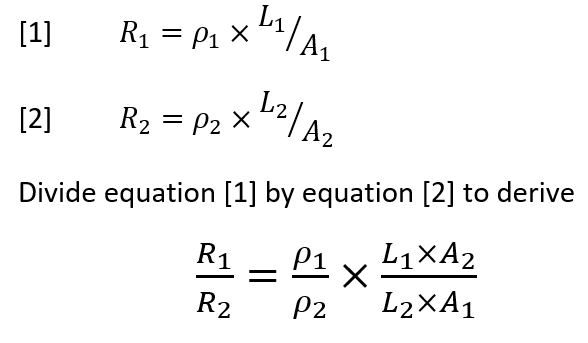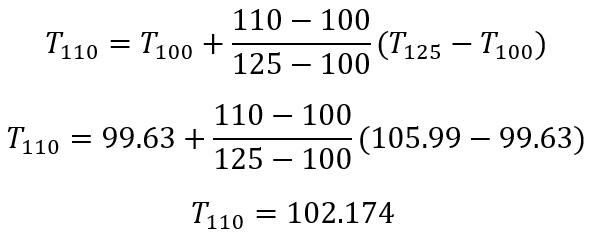5 Formulas you need to memorize for your 4A exam
These are the key formulas that are missing from your academic supplement. Knowing these key formulas may give you some free points when you go to write your 4A SOPEEC exam.
If two or more resistors are placed in parallel, finding the equivalent resistance is the first step to solving any electrical calculation.

To compare two different cables, you must create the equation below.

To find this equation, you start with the conductor resistivity equation on page 33 of your academic supplement and solve it for two different cables, R1 and R2.

The academic supplement has the formula for thermal expansion of length and volume, but the formula for an increase in area is missing.

Fortunately, the formula for area is very similar to the formula for length and volume

The steam dryness factor quantifies the amount of water in the steam. If steam contains 5% water by mass, it is said to have a dryness factor of 0.95, or 95% dry.
This dryness factor affects enthalpy, density, internal energy, and many other properties of steam. Finding the properties of specific volume, internal energy, enthalpy, and entropy uses the same formula. The formula to calculate specific volume is only slightly more complicated.
In all formulas, X is the dryness factor.
Specific Enthalpy

Internal Energy

Specific Entropy

Specific Volume

Interpolation is the formula used to calculate properties for temperatures and pressures not listed in the steam table.
The formula for interpolation below is hard to memorize on its own. but becomes easy with guided practice.

For example, this is how you would calculate the boiling temperature of water at 110 °C based on temperatures listed at 100 °C and 125 °C.

While this is not a formula you need to memorize, it is equally important to know what information is in your book so you're not wasting time looking for something that may not be there. It's a good idea to review these specific sections the day before your exam just so you know where to find key values and formulas.
Basic Unit Conversions: Page 2-3
Relative Densities Table: Page 4
Latent heat of fusions and refrigeration: Page 21
Specific heat of Gasses: Page 23
Coefficient of thermal conductivity: Page 27
Specific heat and linear coefficient of expansion: Page 28
Piping Dimensions: Page 32
Electrical wire temperature coefficients: Page 33
Useful data and Unit Conversions: Page 39
Ion names and formula: Page 38
This list of chemical formulas is not asked directly on your exam. However, it can help you convert chemical shorthand (such as H20) to its more common name (Water) on water treatment questions.